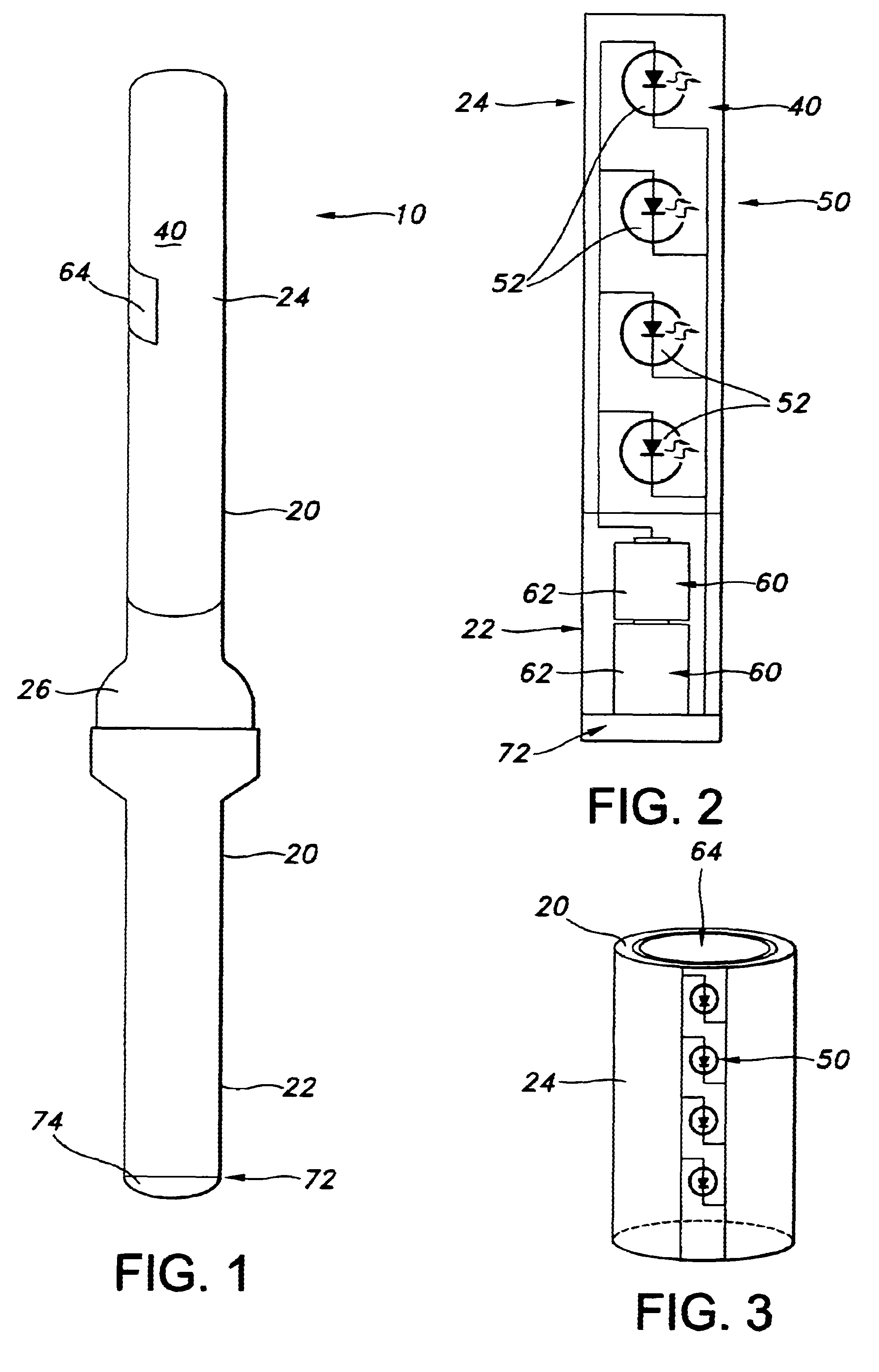Lighting system and device
a lighting system and lighting technology, applied in the field of lighting systems and devices, can solve the problems of inability to maintain the brightness of the light source, and inability to produce intensely visible light,
- Summary
- Abstract
- Description
- Claims
- Application Information
AI Technical Summary
Benefits of technology
Problems solved by technology
Method used
Image
Examples
Embodiment Construction
Referring now in detail to the drawing figures, wherein like reference numerals represent like parts throughout the several views, FIGS. 1-3 illustrates a preferred embodiment of the present invention 10. As shown, the present invention 10 comprises a housing 20, lighting fluid 40 carried within the housing 20, a light element 50 immersed in the lighting fluid 40, and a power source 60 to energize the light element 50. The present invention 10 is preferably lightweight and portable.
In a preferred embodiment, the housing 20 is a unitary columnar assembly formed of a durable, lightweight and water-resistant material that can withstand shock if dropped. The assembly has at least one section 24 through which light can pass, and wherein the material of this section preferably is not adversely affected by gas, oil, ether, or most other organic solvents. One such material is plastic. In one preferred embodiment, the housing 20 comprises a food grade plastic. Alternatively, as will be under...
PUM
 Login to View More
Login to View More Abstract
Description
Claims
Application Information
 Login to View More
Login to View More - R&D
- Intellectual Property
- Life Sciences
- Materials
- Tech Scout
- Unparalleled Data Quality
- Higher Quality Content
- 60% Fewer Hallucinations
Browse by: Latest US Patents, China's latest patents, Technical Efficacy Thesaurus, Application Domain, Technology Topic, Popular Technical Reports.
© 2025 PatSnap. All rights reserved.Legal|Privacy policy|Modern Slavery Act Transparency Statement|Sitemap|About US| Contact US: help@patsnap.com


